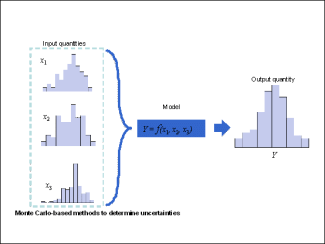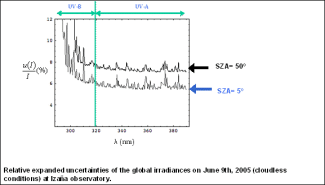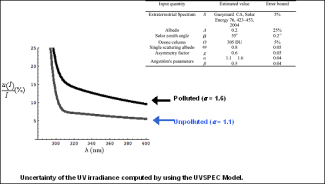A novel method to estimate uncertainties in both measurements and results of radiative transfer modelling has been developed. The advantage of the method is that it is generally applicable and can also reflect non-linear dependencies. This method allows efficient propagation of uncertainties through any model. It involves first randomly generating a large set of values of the input quantities. Next, it requires sequentially evaluating the output quantity (which is determined by the input quantities through a measurement model). Finally, the dispersion of the computed output values can be used to evaluate both the estimate and the uncertainty of output quantity. The latter is taken as being equal to the standard deviation of the set of computed data.

Uncertainties were assessed by these means from measurements with the mobile NDACC spectroradiometer system of the Leibniz Universität Hannover (Institut für Meteorologie und Klimatologie, IMUK). The main uncertainty sources are the cosine error and the errors involved in the absolute calibration. From: Cordero, R., G. Seckmeyer, D. Pissulla, L. DaSilva, F. Labbe. Uncertainty Evaluation of Spectral UV Irradiance Measurements. Meas. Sci. Technol. 19 (2008) 1-15.

Uncertainties of model calculations can also be determined by this method. Such models have to use input of atmospheric parameters that are uncertain as well, which leads to considerable uncertainty as well even for cloudless skies (From: Cordero, R., G. Seckmeyer, D. Pissulla, L. DaSilva, F. Labbe. Uncertainty evaluation of the spectral UV irradiance evaluated by using the UVSPEC Radiative Transfer Model. Optics Communications (2007).
